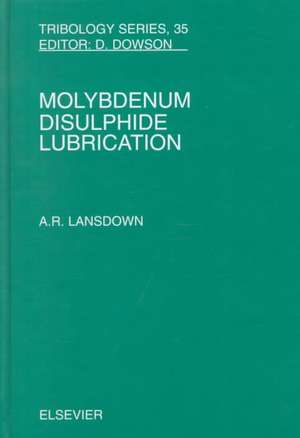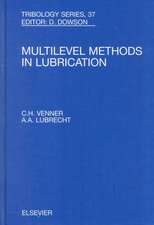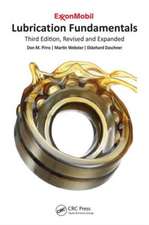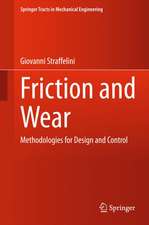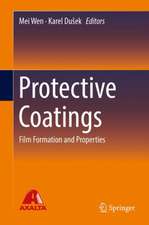Molybdenum Disulphide Lubrication: Tribology and Interface Engineering, cartea 35
Autor A.R. Lansdownen Limba Engleză Hardback – 27 mai 1999
Preț: 1190.36 lei
Preț vechi: 1630.63 lei
-27% Nou
Puncte Express: 1786
Preț estimativ în valută:
227.81€ • 236.95$ • 188.07£
227.81€ • 236.95$ • 188.07£
Carte tipărită la comandă
Livrare economică 15-29 aprilie
Preluare comenzi: 021 569.72.76
Specificații
ISBN-13: 9780444500328
ISBN-10: 0444500324
Pagini: 379
Ilustrații: 1
Dimensiuni: 156 x 234 x 24 mm
Greutate: 0.74 kg
Editura: ELSEVIER SCIENCE
Seria Tribology and Interface Engineering
ISBN-10: 0444500324
Pagini: 379
Ilustrații: 1
Dimensiuni: 156 x 234 x 24 mm
Greutate: 0.74 kg
Editura: ELSEVIER SCIENCE
Seria Tribology and Interface Engineering
Cuprins
Chapter headings and selected papers: Preface. History. Early beginnings. Range of applications. Occurrence and Extraction. Occurrence. Molybdenum and its Compounds. Oxides of molybdenum. Chemical uses of molybdenum. Properties of Molybdenum Disulphide. Intercalation compounds. Oxidation. Mechanism of Lubrication. Fundamentals of friction. Load-carrying capacity. Formation of Molybdenum Disulphide Films. Burnishing of soft films. Effects of moisture and other vapours on film formation. Properties of Molybdenum Disulphide Films. Friction. Effects of moisture and other vapours. Transfer in Lubrication. Transfer of molybdenum disulphide. Nature and location of the transfer source. Lubrication by Molybdenum Disulphide Alone. Different techniques of use. Sputtering and Other Physical Deposition Processes. Effect of substrate. Pulsed laser deposition. Bonded Films. Types of bonded film. Friction and wear properties of bonded films. Composites. Ceramic and inorganic composites. Electrical brushes and sliprings. Use in Oils and Greases. Interaction between molybdenum disulphide and liquids. Pastes and dispersions. Other Lamellar Solid Lubricants. Occurrence and properties. Transition metal dichalcogenides. Corrosion and Fretting. The chemical environment. Selection and Use. Selecting the type of solid lubricant. Subject index.
